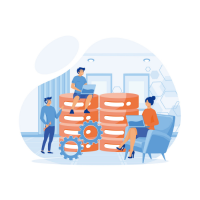HubSpot Onboarding, Implementation, Integration, Training, Data, Support, Development Experts Who Get Construction
Unlock The Potential Of HubSpot With Construction Industry Specialists
Trusted by Leading Construction Industry Brands
















Construction Brands Need A Custom Approach To HubSpot
Are you searching for a HubSpot expert with deep knowledge of the project-centric construction buyer journey and extensive experience in commercial and business processes?
Insynth is your go-to partner. We specialise in CRM implementation, development, and support for product manufacturers, distributors, consultants, and contractors across the construction sector.
Why Partner with Insynth?
Choosing Insynth means gaining access to a unique set of skills that combine industry knowledge with technical expertise:- Tailored CRM Implementation: We understand the nuances of the construction industry. Our tailored approach ensures that your HubSpot setup perfectly aligns with your business needs, supporting both your day-to-day operations and long-term strategies.
- Ongoing Development and Customisation: As your business evolves, so should your tools. We provide continuous platform development to adapt to changes in your business landscape and market conditions.
- Dedicated Support: Our team is well-versed in both HubSpot and the construction industry, offering timely and relevant solutions to ensure your CRM system always performs at its best.
- Proven Expertise: With years of experience at the intersection of construction and CRM technology, our track record is solid. We’ve empowered numerous construction businesses to maximise their potential through effective CRM strategies.
Elevate Your Business with Expert CRM Solutions
With Insynth, you’re not just adopting a CRM system; you’re enhancing your operational capabilities with expert guidance tailored to the construction industry. Let us help you utilise HubSpot to its fullest potential, making your business processes more efficient and your strategic decisions more impactful.
Interested in transforming your CRM approach? Contact Insynth today and learn how our specialised knowledge can elevate your business.
A Proven Partner
Insynth is a Platinum HubSpot Agency. This means HubSpot recognises us for our understanding of the platform and our ability to implement the best solutions for our customers.
 Construction Experts
Construction Experts
Tap into over 30 years of construction experience to align HubSpot with the way your business runs, and how the industry operates.
Trusted To Deliver
It's easy for us to say we're good at what we do, but hear what companies like yours think of our performance too. See reviews from customers on HubSpot's Partner Directory.
The Latest HubSpot Insights
Easily stay up to date with the latest HubSpot news, tips and tricks
15 min read
25 HubSpot Features You Should Use in 2024
Dec 20, 2023 by Ainhoa Rodriguez-Muguruza
5 min read
HubSpot: What Is New In November
Nov 23, 2023 by Ainhoa Rodriguez-Muguruza
Master HubSpot: Join Our Blog for Expert Tips!
Stay ahead in the construction industry with Insynth!
Subscribe to our blog for the latest insights on construction sales and marketing, along with expert tips on maximizing HubSpot. Join our community to boost your business growth and stay informed with cutting-edge strategies.
Don't miss out — sign up now for regular updates and transform your approach to success!





